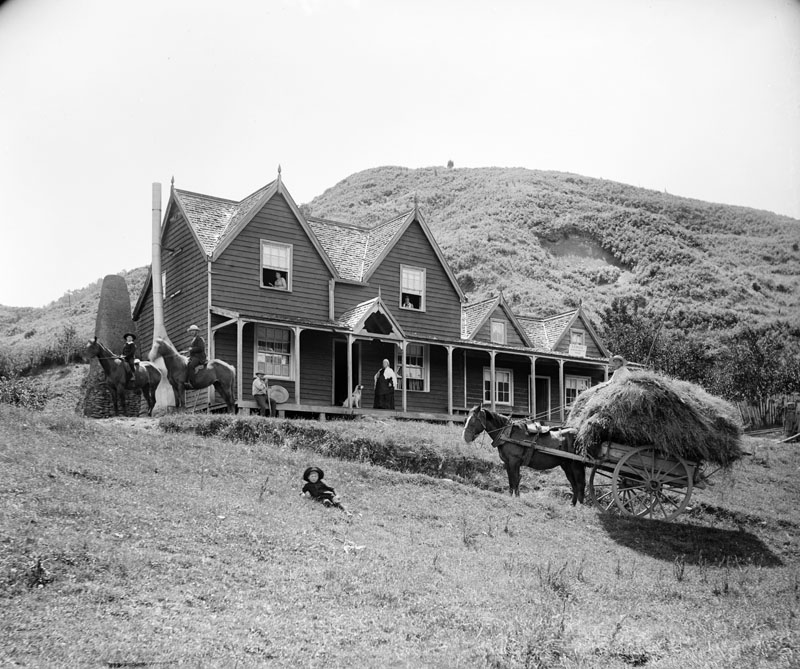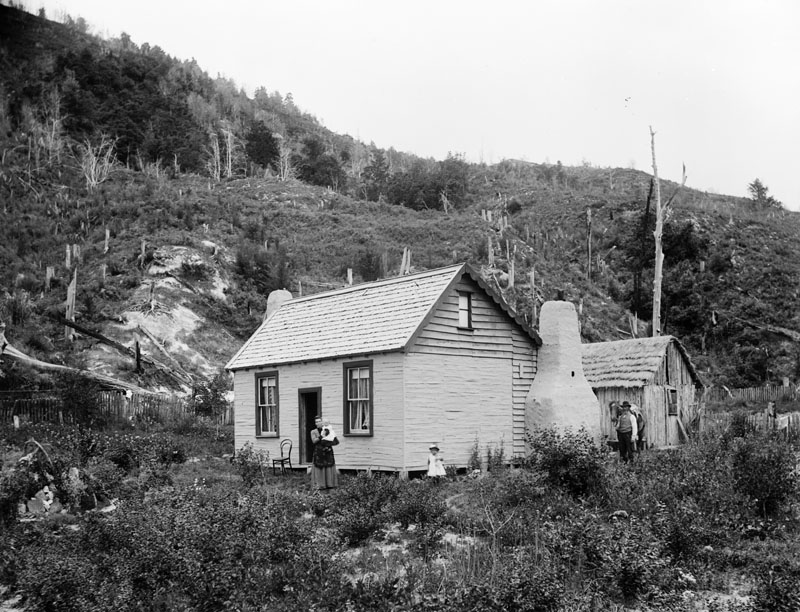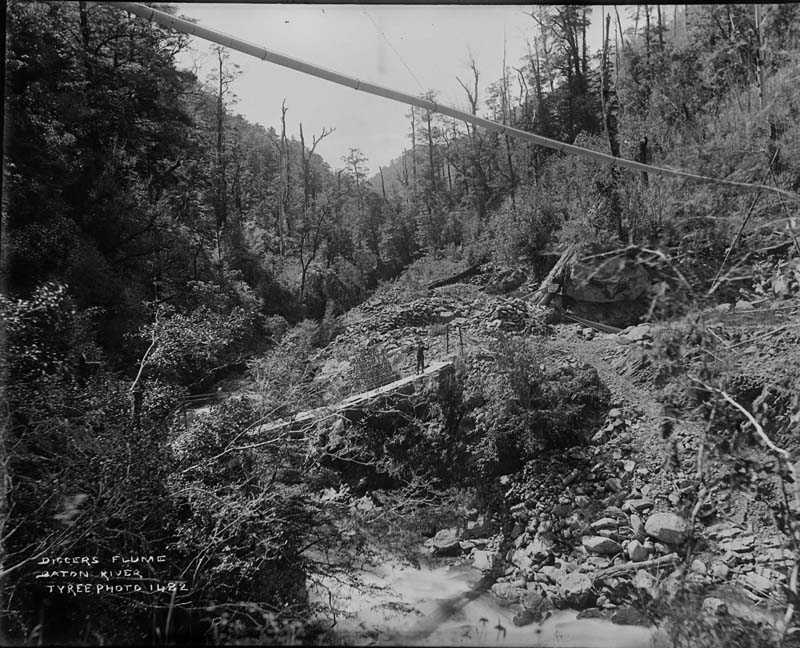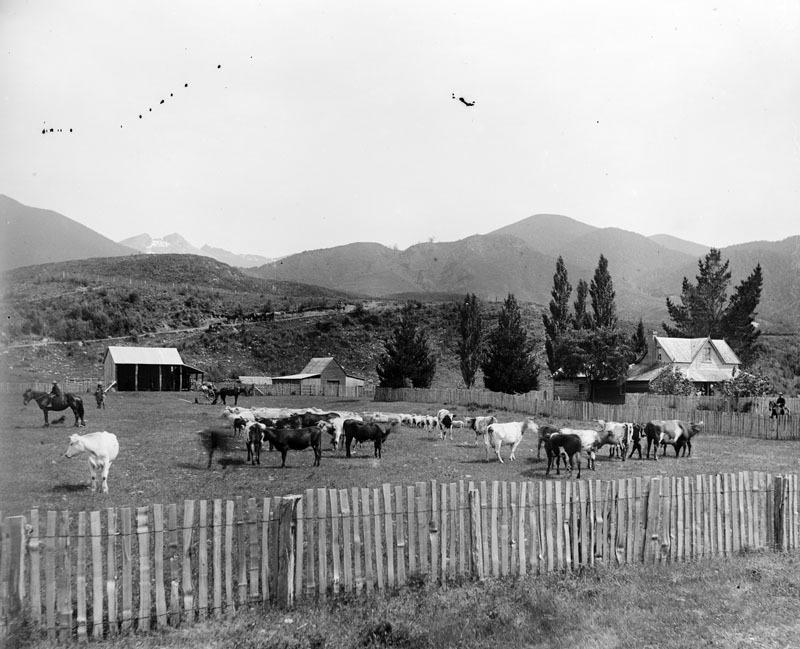Baton Valley Gold
Good as Gold: The Baton The remote Baton, at the base of Mount Arthur (Tu ao Wharepapa), once had two hotels, a shop, Post Office and a racecourse. It is thought the river and valley were named after a runaway sailor, Batteyn Norton who was helping settler, J. P.
Good as Gold: The Baton
The remote Baton, at the base of Mount Arthur (Tu ao Wharepapa), once had two hotels, a shop, Post Office and a racecourse.
It is thought the river and valley were named after a runaway sailor, Batteyn Norton who was helping settler, J.P. Salisbury, make a track in the Motueka Valley, when they found traces of gold in about 1855.1
Gold digging was in full swing by 1859, with about 100 diggers settled in the valley. There were some good discoveries, with the largest nugget found weighing 36 oz. The nugget was spotted in a wheel barrow filled with earth from a digging.2
Gold from the streams fed by Mount Arthur came from many different geological formations. Baton gold sold for a lower price as the dull little nuggets often contained sand. Wangapeka gold was of reef origin and many old prospectors spent years trying to find the parent reef. 3
The Taylors arrived in the Baton in 1859 after four years on the Collingwood goldfields, and set up a store and hotel.4 Grand dances were held annually at the hotel to celebrate the birthday of Mrs Taylor, affectionately known as the Queen of the Baton, on 24 May - which was also Queen Victoria's birthday.5 There was another hotel run by J.W. Sutcliffe further down the valley.6
The main diggings were around the junctions of the Skeet and Ellis Rivers.7 Access to the gold field was described as being so easy that a young man rode a bicycle there from Nelson.8
After the first enthusiasm had died down about 50 diggers remained on the field. Some took up land and became settlers and, for many years, there was a local school. Hack meetings at a racecourse at the Baton brought entrants from districts many miles away.9
In June 1863, there was an advertisement in the Colonist: "Splendid NUGGET of GOLD from the Baton weighing 18oz to be RAFFLED..." The nugget was apparently larger than a hen's egg.10
While the Baton was never regarded as a rich field, it remained a standby for local farmers and diggers down on their luck elsewhere.11 Arthur Needham arrived at the Baton to find most of the gold-bearing ground occupied. It was suggested he dig under a large rock and he found enough gold to net £600, with which he bought a farm.12
In February 1889, ‘Australian' wrote about his trip to the Baton Goldfields, finding some ‘colour' along the Motueka River and again along the Baton River. He commented on the kindness and attention given by Mrs Taylor at the Baton Hotel. The party came across miners working eight claims in the river and noted they were getting gold, which was well deserved as the work was heavy and laborious.13
This report was followed a few weeks later by news that would ‘make people's mouths water', with Thomas Davis showing various specimens of gold, some the size of small Jerusalem artichokes at 2-3 oz. Men working there were making £12 a week with ease.14
Walter Ashgrove wrote a diary about his gold prospecting experiences in the Baton in the 1890s. In April 1895 he wrote that gold was very scarce returning only a little more than their expenses. His original diary is held by the Alexander Turnbull Library.15
There was some excitement in 1900 when discoveries indicated a potentially valuable coalfield in the Baton, but this seems to have come to nothing.16 In fact a seam of coal had been found in the 1850s.17
By 1902, the Baton workings were reported to be deserted. However, during the 1930s Depression, men were subsidised to fossick in the river and found gold among stones unworked by previous generations.18
The opening of the Baton Bridge in September 1907 was described as an immense boon to settlers on the Western side of the Motueka River. It was hoped there would soon be a railway running to Motueka, with a railway station near the new Baton Bridge.19
An historical article written in 1915 described the Baton Valley as once being a scene of great mining activity with a large amount of gold won from the alluvial workings. The old Hotel "had witnessed so many scenes of fun and frolic when diggers met for a jollification..." After fire swept through the hotel, the ground was ‘washed' returning an amount of gold which indicated the old diggers ‘threw their gold around'.20
Small amounts of hops were grown by settlers in the area and taken to Nelson by dray and horse. Tobacco was also introduced and, by the 1920s, dairying came into its own with improved access and the introduction of trucks which collected cream from country farms.21
2013
Updated October 12, 2021
Story by: Joy Stephens
Sources
- Newport, J.N.W. (1962). Footprints : the story of the settlement and development of the Nelson back country districts. Christchurch, N.Z. : Whitcombe & Tombs. P 203
- Newport (1962). p 203- 205
- Newport, J.N.W (1957) Goldfields in the Upper Motueka and Buller Valleys. Nelson Historical Society Journal, 1(2), p.7
- Newport (1957)
- Newport (1962), p 208
- Newport, J.N.W. (1978). Footprints too : further glimpses into the history of Nelson Province. Blenheim, N.Z. : Express Printing Works, p141
- Nolan, Tony (1976). Historic gold trails of Nelson and Marlborough. Wellington, N.Z. :A.H. & A.W. Reed. P 70.
- NEM 22/2/1889 The Baton gold field. (1889, 22 February). Nelson Evening Mail, XXIII (45), p. 3.
- Newport (1957)
- Beatson, Kath (1993). The river flows on : Ngatimoti through flood and fortune. Ngatimoti, N.Z. : Kath Beatson & Helen Whelan. p 80
- Nolan, p 70.
- Newport (1962), p 206
- A trip up to the Baton goldfields. (1889, February 6) Nelson Evening Mail, p3
- The Baton gold field. (1889, 22 February). Nelson Evening Mail, XXIII (45), p. 3.
- Newport (1978), p 142-146
- Coal discoveries at Baton. (1900, 25 October). Colonist, XLIV (9939), p. 2.
- Newport (1962), p 204
- Newport (1962), p 206
- The opening of the Baton Bridge. (1907, 5 September). Colonist, XLIX (12032), p. 2
- ‘The Baton District'. (1915, 29 December). Colonist, LVII (13971), p. 6.
- Newport (1978), p 147
Further Sources
Books
- Beatson, Kath (1993). The river flows on : Ngatimoti through flood and fortune. Ngatimoti, N.Z. : Kath Beatson & Helen Whelan.
http://www.worldcat.org/oclc/34845015 - Brereton, Cyprian Bridge (1947). No roll of drums. Wellington, N.Z. : A.H. & A.W. Reed.
http://www.worldcat.org/oclc/34480211 - Fairweather, Sandy & Judy (2001). Gold for the taking : a practical guide to finding and keeping gold in New Zealand. Auckland, N.Z. : The Halcyon Press
http://www.worldcat.org/oclc/155661802 - Newport, J.N.W. (1962). Footprints : the story of the settlement and development of the Nelson back country districts. Christchurch, N.Z. : Whitcombe & Tombs
http://www.worldcat.org/oclc/18091608 - Newport, J.N.W.(1978). Footprints too : further glimpses into the history of Nelson Province. Blenheim, N.Z. : Express Printing Works.
http://www.worldcat.org/oclc/5829428 - Nolan, Tony (1976). Historic gold trails of Nelson and Marlborough. Wellington, N.Z. : A.H. & A.W. Reed.
http://www.worldcat.org/oclc/7248786
Newspapers
- Newport, J.N.W (1957) Goldfields in the Upper Motueka and Buller Valleys. Nelson Historical Society Journal, 1(2), p.7
http://nzetc.victoria.ac.nz/tm/scholarly/tei-NHSJ01_02-t1-body1-d3.html
Websites
From Papers Past:
- The Karamea. (1867, 10 April). The Nelson Evening Mail (Vol 2,Issue 84), p 2
http://paperspast.natlib.govt.nz/cgi-bin/paperspast?a=d&cl=search&d=NEM18670410.2.8 - Good gold "find" on the Baton. (1863, 22 May). Colonist, VI (582), p. 3.
http://paperspast.natlib.govt.nz/cgi-bin/paperspast?a=d&d=TC18630522.2.10 - The Baton gold field. (1889, 22 January). Colonist, XXXII (5426), p. 3.
http://paperspast.natlib.govt.nz/cgi-bin/paperspast?a=d&d=TC18890122.2.9 - The Baton Goldfield. (1889, 28 February). West Coast Times. Issue 7332, p 4
http://paperspast.natlib.govt.nz/cgi-bin/paperspast?a=d&cl=search&d=WCT18890228.2.16 - The Baton. (1890, 22 April). Colonist, XXXIII (5783), p. 3.
http://paperspast.natlib.govt.nz/cgi-bin/paperspast?a=d&cl=search&d=TC18900422.2.10 - Coal discoveries at Baton. (1900, 25 October). Colonist, XLIV (9939), p. 2.
http://paperspast.natlib.govt.nz/cgi-bin/paperspast?a=d&cl=search&d=TC19001025.2.24.31 - The Baton again. (1907, 30 March). Colonist, XLIX (11897), p. 2.
http://paperspast.natlib.govt.nz/cgi-bin/paperspast?a=d&cl=search&d=TC19070330.2.17 - The opening of the Baton Bridge. (1907, 5 September). Colonist, XLIX (12032), p. 2.
http://paperspast.natlib.govt.nz/cgi-bin/paperspast?a=d&cl=search&d=TC19070905.2.11 - The Baton District. (1915, 29 December). Colonist, LVII (13971), p. 6.
http://paperspast.natlib.govt.nz/cgi-bin/paperspast?a=d&cl=search&d=TC19151229.2.34



